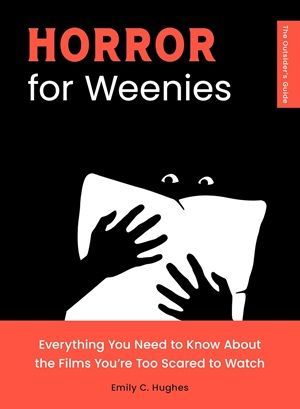For Scaredy Cats with Horror Movie FOMO
⚓ Books 📅 2025-10-13 👤 surdeus 👁️ 7Today’s book recommendation is a nonfiction book that I loved so much that as soon as I finished reading it, I was tempted to read it again. Halloween is my favorite holiday. I love the creepy and the spoopy, the whimsical and the outrageous. I used to love horror films but about 20 years ago, I stopped being able to handle them and finally had to come to terms with the fact that I became a scaredy cat. This book is for those of us who are chickens yet still love horror enough to read the Wikipedia synopses and maybe even look at some still images now and then, just to feel like we’re included.
 Horror for Weenies: Everything You Need to Know About the Films You’re Too Scared to Watch by Emily C. HughesThe introduction in this book is titled “Why Horror Matters,” and honestly, it could almost work as a standalone essay. What makes horror a big deal and why do people like feeling scared? It’s a very important framing that, as any good introduction does, sets up the tone and context of the rest of the book. In the meat of the book, Hughes talks about 25 horror films that are important in the genre, in filmmaking, and in American culture. Before diving into specific films, there is a short and necessary section on horror before the 1960s because she starts with the 1960 classic Psycho. The films are divided into three sections by pairs of decades: the 1960s and 1970s, the 1980s and 1990s, and the 2000s and 2010s. |
Each film is written about in the same format. A single sentence gives you the jist of the film, a reason why you should watch it, and a reason why you should avoid it. Hughes then goes into detail of what happens in each film in a way that is engaging, often funny, not-at-all terrifying, and doesn’t leave you on a cliffhanger (unless the film does that itself). She highlights horror tropes when they come up, which I enjoyed. After the synopsis is my favorite part: why this particular film matters. She talks about the historical context of the film, because that almost always colors the art that is made. Was this during or after a war? What was going on in the news? What was happening in civil rights and what was popular in culture? Each chapter is closed with some fun facts about the making of the film and some recommended books if you don’t think you can bring yourself to watch the movie.
This was a fantastic read that is very close to convincing me I should give reading horror a try.
That’s it for now, book-lovers!
Patricia
Find me on Book Riot, the All the Books podcast, Bluesky, and Instagram.
Find more books by subscribing to Book Riot Newsletters.
🏷️ Books_feed